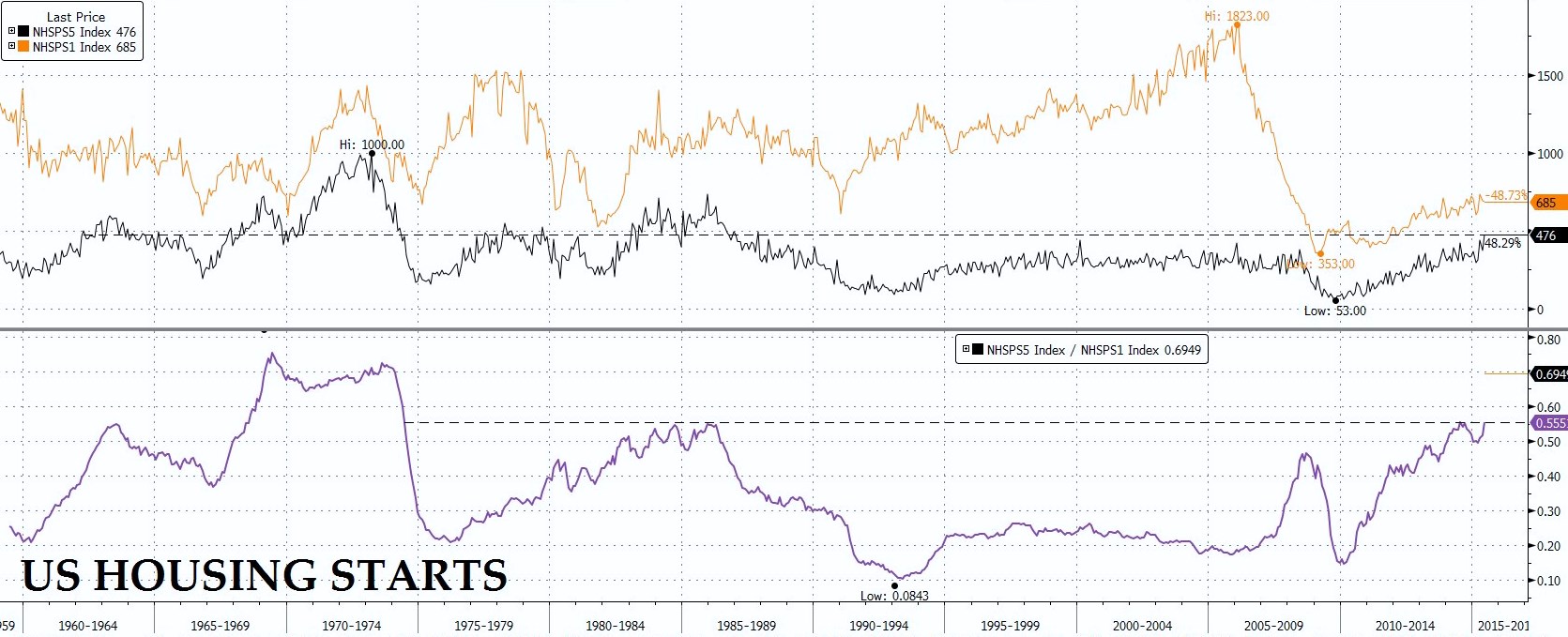There are two connected reasons usually cited for the current dollar strength: the US economy is performing better than all the others, leading towards relatively higher US dollar interest rates, and that this is triggering a scramble for dollars by foreign corporations with uncovered USD liabilities. There is growing evidence that the first of these reasons is no longer true, in which case the pressure to buy dollars should lessen considerably.
In coming to this conclusion we must be careful not to limit our thinking to the dollar rate against other currencies. They are arguably in an even worse position, with active Quantitative Easing in both Japan and the Eurozone failing to resuscitate industrial life, while the UK is in the middle of a heated election campaign. Instead we should think primarily in terms of the dollar’s purchasing power for goods and services, and here the market is already skewed to one side: the public prefers to hold dollars and reduce debt rather than spend freely, because everyone knows that prices of consumer goods are not rising and, so the logic goes, inflation is dead and buried.
Such unanimity is always dangerous and the mainstream fails to notice that far from an inflationless recovery, the US economy appears to be stalling badly. This is hardly surprising since private sector credit is still tight. Depending whose figures you use, total US debt is estimated to be in the region of $57 trillion, an increase of about $4 trillion since the banking crisis in 2008. However, government and state debt held by the public has risen by $6.7 trillion and large corporations have borrowed a further $2.3 trillion to buy back shares. Meanwhile financial debt, which includes asset backed securitisations of consumer debt, has fallen by about $4 trillion, while consumer debt directly held has declined slightly. These rough figures suggest that credit for households and smaller businesses remains constrained.
Since mid-2014 markets have undergone a sea-change, with the dollar strengthening sharply against the other major currencies and the oil price collapsing along with a number of key industrial commodities. The Baltic Dry Index, a measure of shipping demand, has recently fallen to the lowest level ever recorded. Admittedly there is a glut of ore carriers helping to drive shipping rates down, but there can be no doubt that trade volumes are down as well; and there has also been hard evidence with China’s imports and exports having declined sharply.
Common sense says that from the middle of 2014 the world ex-America entered the early stages of an economic slump. Common sense obviously took time to catch up with the U S, and it is only in the last month or so that mainstream economists have begun to cautiously down-grade their GDP1 forecasts. It is now impossible to ignore the confirmations which are coming thick and fast. This week alone has seen inventories stuck on the shelves, small business optimism declining and the National Association of Credit Managers reporting serious financial stress; and that was only Monday and Tuesday. This is the background against which we must assess future dollar-denominated prices.
Conventional wisdom would have us believe that an economic slump leads to an increased demand for cash as businesses are forced to pay down their debt: this is essentially the Irving Fisher debt-deflation theory from the 1930s. It is for this reason that modern central banks exist and they stand ready to create as much money as may be required to prevent this happening. Let us assume they succeed. We then have to consider another factor, and that is the progress of monetary hyperinflation, for this becomes the underlying condition driving dollar prices.
Central banks can nearly always debauch their currencies with impunity. People automatically think that money is stable and do not generally draw the conclusion that a rise in the level of prices is connected to an expansion in the quantity of money or credit. While they often admit that money buys less today than it did thirty or forty years ago, and they are aware of the consumer price index trend, they may fail to appreciate that money can and does change its purchasing power from day to day. The result is they attach changes in prices not to money but to factors affecting individual goods.
There are several factors that affect prices, one of which is an increase in the quantity of money when that new money is spent on the goods being considered. Obviously, if the new money is not spent on consumer goods, but hoarded or spent on something else, an increase in the quantity of money will not lead to higher prices for items in a consumer price index. But more importantly, prices are inherently subjective, which is why we cannot forecast tomorrow’s prices. If you find this hard to accept, just look at the average stock trader’s record: if he is very good he might have a 10% edge, but even then he cannot tell you tomorrow’s stock prices.
Subjectivity of prices is the consequence of changing preferences for money relative to individual goods. In the current economic climate with its restricted credit people are understandably cautious about spending, which means their preference for money is relatively high. But not everyone shares the same preferences, and they are likely to be different across different classes of goods as well, with commodities and raw material prices behaving differently from the prices of finished goods, even though they are linked.
So far price rises due to monetary inflation have been generally restricted to financial markets and associated activities. Early speculators have done very well, with today’s buyers being forced to pay considerably higher prices for the same investments. Despite this obvious phenomenon, speculators do not usually understand it is the swing in preference from money towards financial instruments that is behind the rise in prices.
But what if this relative preference starts to swing in favour of commodities? The swing in preference has meant the price of oil in dollars has already risen 25% in recent weeks, or alternatively, we can say the purchasing power of the dollar has fallen by that amount. Copper, the commodity that should be collapsing as we go into a slump, has also risen, this time by 15% over the last two months.
Commodity traders who look at the charts will tell you that these are normal corrections in a bear market for the commodities involved. But how can this be, when we are entering a deflationary slump? The answer is simple: there has been a change of preferences with respect to oil, where buyers value oil more than dollars, and also for copper. This should not be confused with an increased desire to own oil and copper; rather it is a reduced desire to hold dollars relative to these two commodities.
If the idea the dollar is weakening spreads from selected but economically important commodities it could begin to alter the balance of preferences more generally, for which almost everyone is ill-prepared. How long the process takes we cannot know until it happens; but if the general public realises it is the dollar’s purchasing power going down instead of goods prices rising, it will be very difficult to stop its purchasing power from collapsing entirely.


